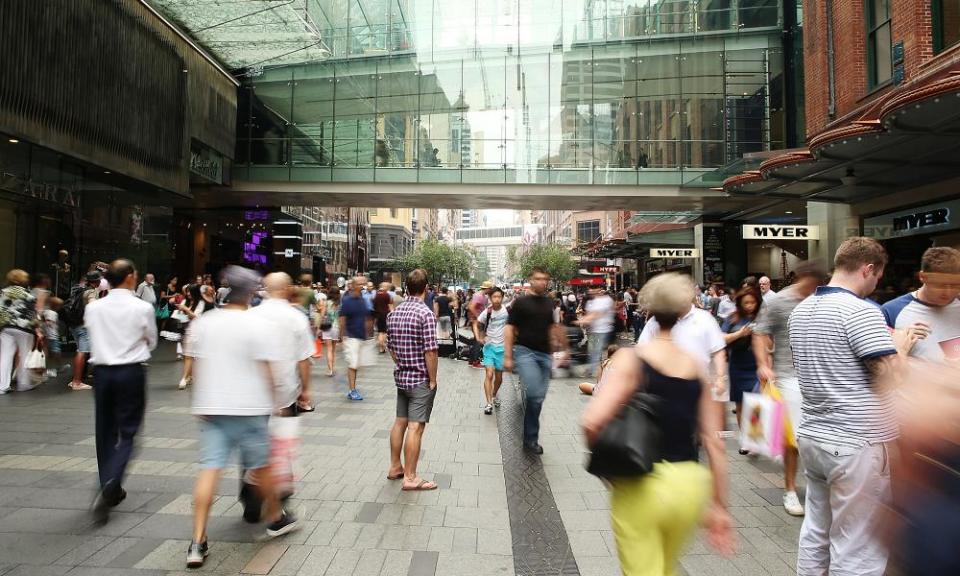Australia's GDP growth slows to 2.8% as weaker spending hits economy

Australia’s economy grew much more slowly than expected in the past three months, dragging the annual growth rate down noticeably, as weaker household spending hit the national accounts.
The economy has clearly lost momentum as property prices continue to slide in Sydney and Melbourne, amid tighter lending standards and credit conditions.
The impact of the national drought has also started to hit the national accounts, with the agricultural, forestry and fishing industry sector registering negative growth of 1.6% for the quarter.
Bureau of Statistics figures show national output expanded by 0.3% in the September quarter – the slowest quarterly growth rate in two years – well below the market forecast of 0.6%.
It means Australia’s economy is growing at an annual rate of 2.8%, down from 3.4% in the previous quarter.
Just one day ago, the Reserve Bank was saying its central scenario was for GDP to grow by an average 3.5% over this year and next, before slowing in 2020. That scenario may have to be revised down now.
It creates a complicated situation for the Morrison government.
The unemployment rate is near a six-year low, at 5.1%, and wages growth has picked up slightly in recent months, though it is still anaemic. Crude oil prices have also fallen, which will feed through to lower inflation.
But households are unlikely to respond by increasing consumption because household debt levels are already extreme and large falls in house prices have reduced household wealth. Households are likely to want to start saving more, rather than spending more, so consumption will stop being a key driver of growth.
Spending on discretionary items already slowed during the September quarter, and the subdued growth in gross disposable income resulted in the lowest household saving ratio (2.4%) since December 2007.
“With household debt as a proportion of annualised household disposable income already at an all-time high of around 190%, combined with tighter lending controls being implemented by the banks, this source of funding for household consumption is … likely to dry up,” KPMG’s chief economist, Brendan Rynne, said.
Shane Oliver, the chief economist of AMP Capital, said today’s data had convinced him the Reserve Bank’s next move on interest rates would be a rate cut, rather than an increase.
“However, with the RBA still seeing the next move as being up, it will take them a while to change their thinking so we don’t see rates being cut until second half next year,” Oliver wrote to clients on Wednesday.
“When it does start cutting, the RBA will likely stick to 0.25% increments and, since rate moves are a bit like cockroaches, there is likely to be more than one. This, in turn, will ultimately weigh on the Australian dollar.”
The treasurer, Josh Frydenberg, said the government would still deliver a budget surplus next year, and it was important to remember the economy was still growing strongly.
But he said voters would have to wait until the midyear budget update on 17 December to see how data would affect the budget forecasts.
He told parliament the economy was still growing strongly.
“At 2.8%, it is faster than the OECD average, and faster than any G7 country except the United States,” he said. “Over 1.1 million new jobs are being created. We’re one of only 10 nations in the world to have a AAA credit rating from the three leading credit rating agencies. Unemployment has come down to 5%, the lowest level since 2012.”

 Yahoo Finance
Yahoo Finance 